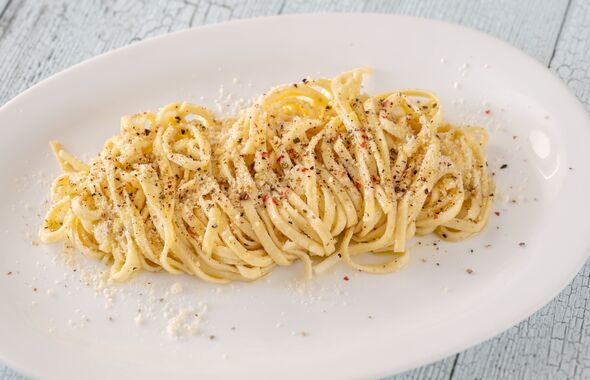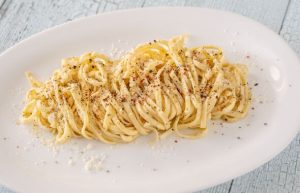Cacio e pepe: Good Food pasta recipe sparks fury in Italy

Rome: Italians have reacted with fury after the UK Good Food website published a recipe for a traditional Roman dish that did not include the correct original ingredients and appeared to belittle it as a quick eat.
Good Food’s recipe described cacio e pepe as a meal that could be whipped up for “a speedy lunch” using “four simple ingredients – spaghetti, pepper, parmesan and butter”.
Fiepet Confesercenti, an association representing restaurants in Italy, said it was “astonished” to see the recipe on such an esteemed food site, owned by the BBC until 2018, adding: “There are not four ingredients, but three: pasta, pepper and pecorino.”
Its president Claudio Pica said letters had been sent to Immediate Media, the site’s owner, and UK ambassador Edward Llewellyn.
In a statement, Good Food said it has been in touch with Fiepet Confesercenti to “explain that our recipe is designed to be easy to use for home cooks using readily available ingredients in the UK”.
It added that it has invited the Roman restaurant association to “supply us with an authentic Italian version that we would love to upload and credit to them”.
The furore has been widely covered in Italian media, with a journalist at public broadcaster RAI saying: “We are always told, you are not as good as the BBC… and then they go and do this. Such a grave mistake. The suggestion of adding some cream gave me goosebumps.”
The Good Food food brand was owned by BBC Studios, the BBC’s commercial wing, before it was sold to Immediate Media Co. The BBC prefix was dropped from its name last year.
In a tongue-and-cheek Instagram post, Good Food referred to the recipe as having caused an “international incident” in a video showing Keith Kendrick, its Magazines Editor, walking out of the office with a box filled with his belongings.
While some chefs may experiment with the dish, the main concern was that the website misled readers by presenting its version as the original.
Italians often mock foreigners for their interpretation of their recipes, but the indignation in this case was about something deeper: tampering with tradition.
Maurizio and Loredana run a hotel in central Rome – it’s been in their family for four generations.
“You can do all the variations in the world – but you cannot use the original Italian name for them, said Maurizio. “You cannot say it is cacio e pepe if you put butter, oil and cream in it. Then it becomes something else.”
He added: “You have to yield to Caesar that which is Caesar’s!”
Giorgio Eramo runs a fresh pasta restaurant near St Peter’s square – serving up cacio e pepe and other traditional pasta dishes.
“It’s terrible. It’s not cacio e pepe… What Good Food published, with butter and parmesan, is called ‘pasta Alfredo’. It’s another kind of pasta,” he said.
On his restaurant’s board of pastas, he offers cacio e pepe with lime – a variation. But he says that’s ok.
“It’s different, it’s for the summer, to make the pasta more fresh. But it doesn’t impact the tradition. It’s not like cream or butter. Lime is just a small change.”
Nicola, who runs a sandwich shop near the Vatican, took particular issue with the inclusion of cream.
“Cacio e pepe should not be made with cream; cream is for desserts. For heaven’s sake. Whoever uses cream does not know what cooking means.”
Italians often get angry when foreigners tinker with their food recipes – pizza with pineapple, cappuccino after midday or carbonara with cream, for example.
Eleonora, who works at a busy cafe in central Rome, thinks it is probably not necessary for Italians to get so angry about something like this, but understands why they do.
“Our tradition is based on food. So if you touch the only thing that we have, in all over the world… that can make us feel a bit sad.”





